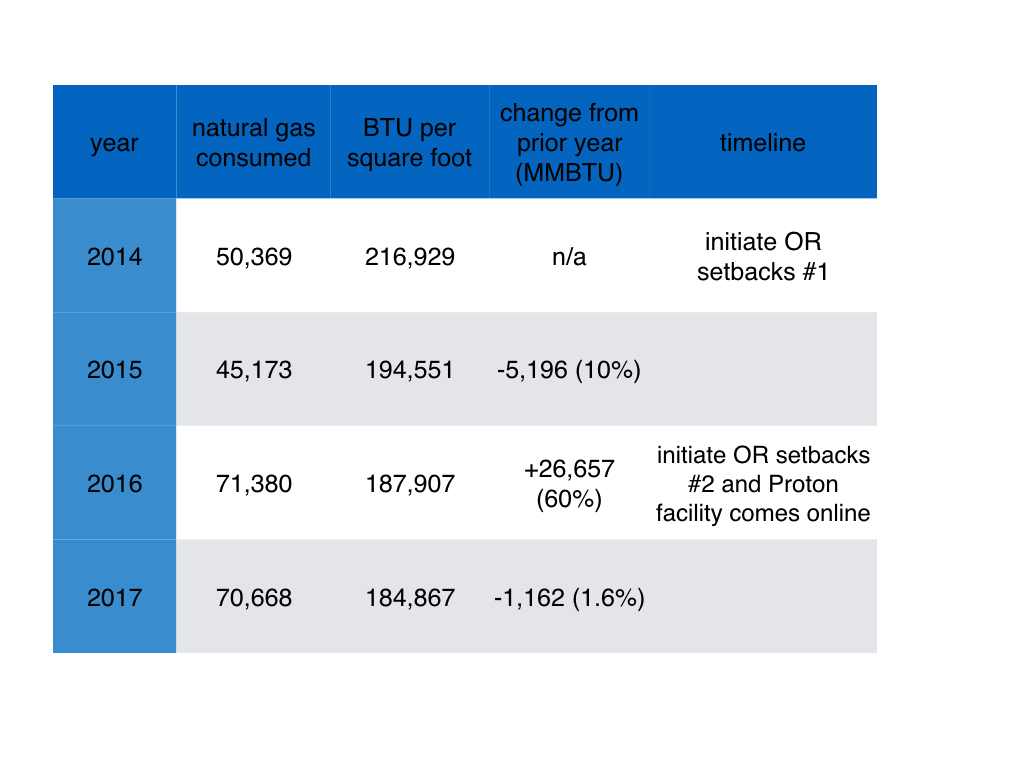OT-125
Sustainable practice and energy savings through setbacks of OR heating, ventilation and air cooling (HVAC)
Gordon D, Kinman T
Cincinnati Children's Hospital Medical Center, Cincinnati, OH, USA
Introduction
Inpatient healthcare is the 2nd largest commercial energy user in the US. Within a hospital, the operating room (OR) is the largest user per square foot of energy due to the strict environmental regulations of the OR suite. Coal-fired power plants generate 30% of the electricity used in the US, with damaging byproducts. As the role of pollution on population health has become more evident and as energy costs rise (hospital energy costs have risen from $3.89 per square foot in 2003 to $6.09 per square foot in 2008) the healthcare industry has begun to look for more sustainable ways to acquire energy and to decrease energy use.
The OR is a good place to look for opportunities to reduce energy use. Heating, Ventilation and Air Cooling regulations require 20 air changes per hour (ACH) and positive pressure in each room relative to the adjacent space. This requires a large amount of energy but this high energy use need not occur when the OR is not in use.
By implementing changes to the HVAC system to scale back airflow during off hours (a process known as “OR setbacksâ€) a significant amount of energy may be saved, with resultant cost savings.
Methods
Operating rooms that were not in use overnight were “set back†from 20 ACH to 6 ACH for 9 hours (8pm-5am). The OR used for night-time cases was not part of the setbacks, and staff were educated regarding the means to bring a “set back†OR back on-line if needed.
Energy requirements of the building were tracked for the following year.
Results
The natural gas usage decreased by 5,196 MMBTU (10%) over the year following the setbacks, a direct cost savings of $23,000. The setbacks were stopped the following year, but reinstated the next year when our Proton Therapy building came on line and began treating patients. The natural gas requirement for heating and cooling the Proton Center was mostly offset by the OR setbacks that had been reinstated, but the savings from the OR setbacks couldn’t be directly measured.
Discussion
The OR is full of “low-hanging fruit†when it comes to opportunities to decrease waste, reduce costs, and practice more sustainable healthcare. OR setbacks are easy to implement if there is central control of the HVAC system. When making the case for sustainability, projects such as this (no impact on patient care, no direct involvement of staff, significant cost savings) are a good place to start.
Conclusions
OR setbacks are an effective and easy way to reduce unnecessary energy consumption, with significant cost savings.
References
1) https://practicegreenhealth.org/topics/energy-water-and-climate/energy
2) https://practicegreenhealth.org/topics/leaner-energy
3) https://www.eia.gov/tools/faqs/faq.php?id=427&t=3
4) Gabbard, A. Coal Combustion: Nuclear Resource or Danger. Oak Ridge National Laboratory, UT for the US Department of Energy. February 2008. Available at: http://www.ornl.gov/info/ornlreview/rev26-34/text/colmain.html
Top












